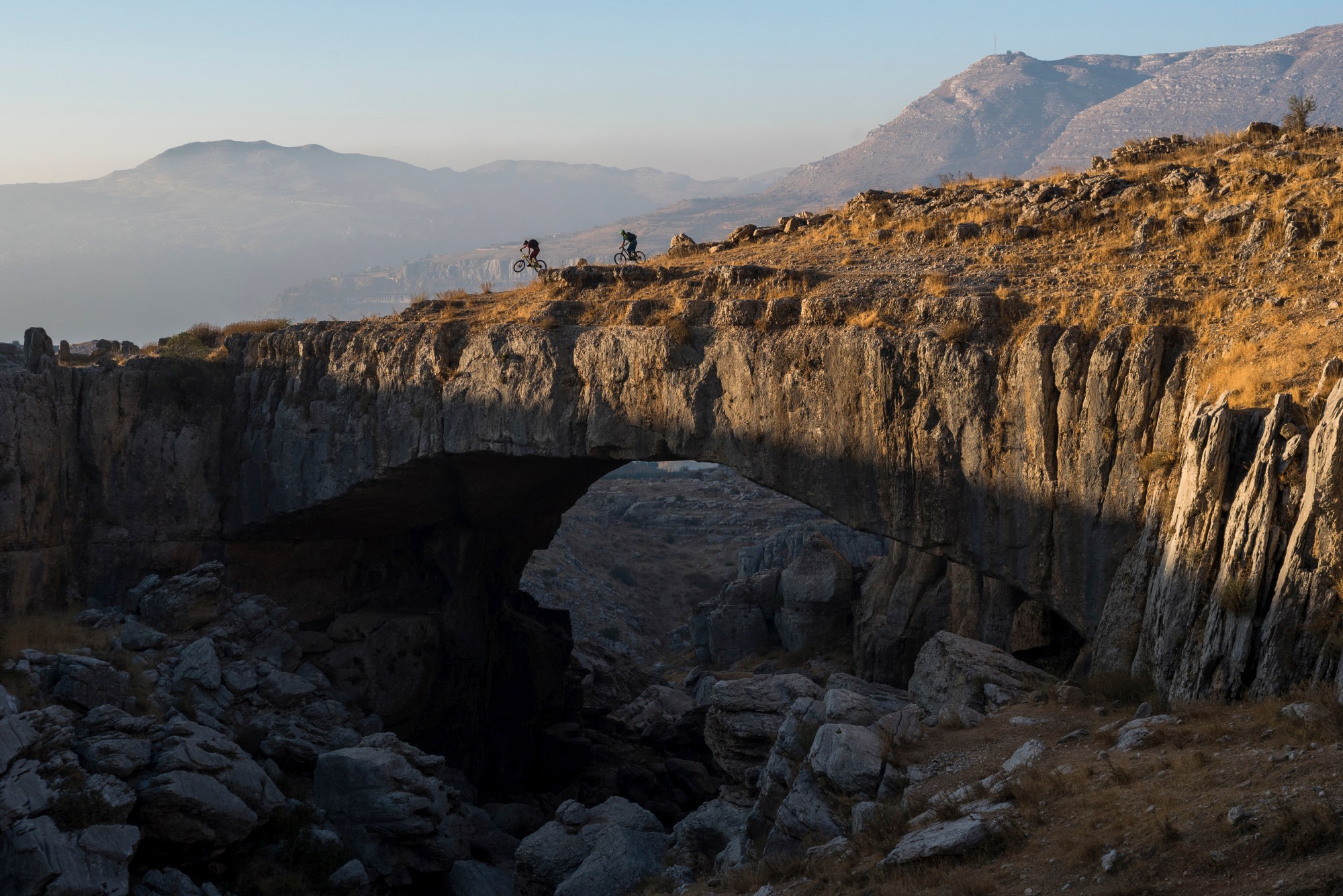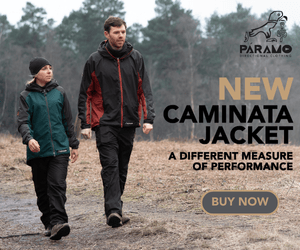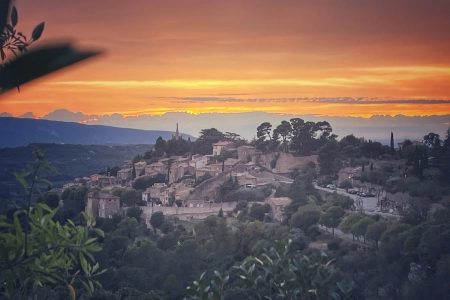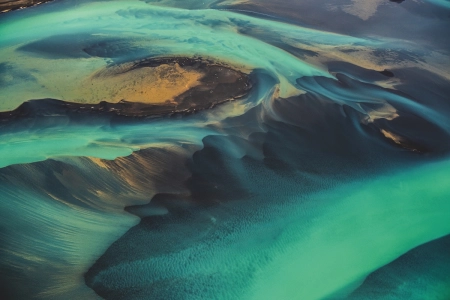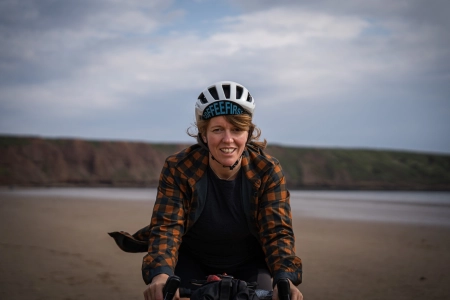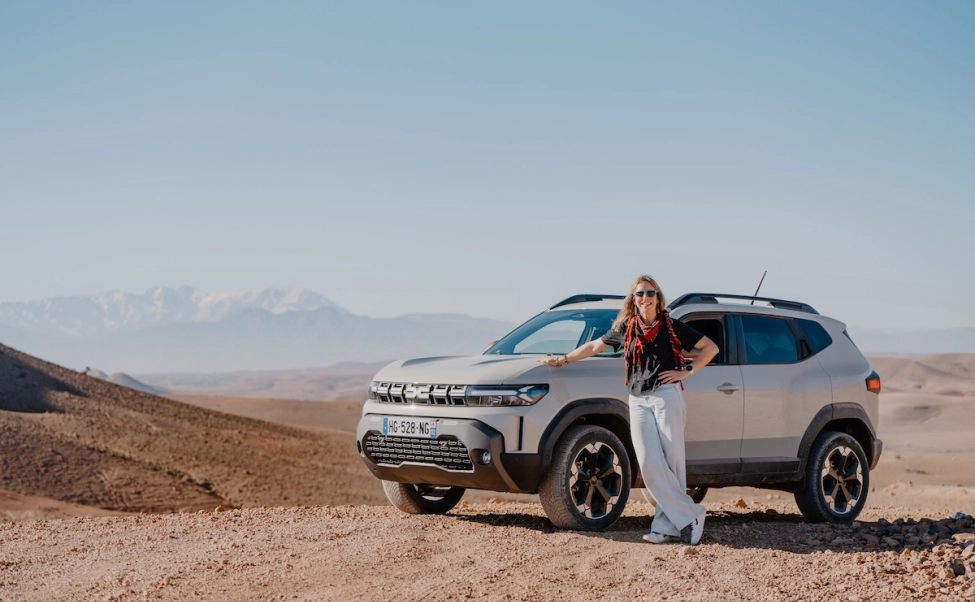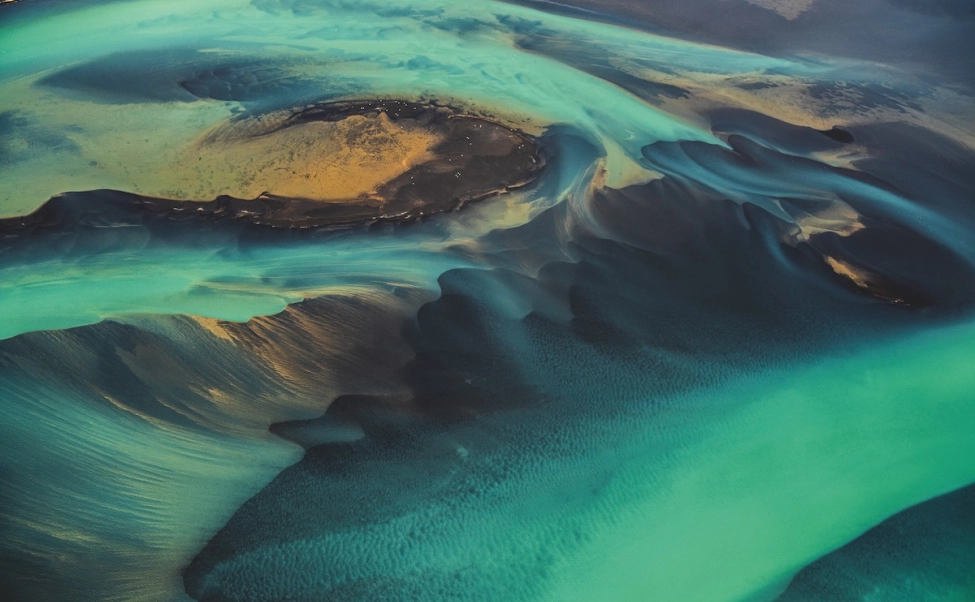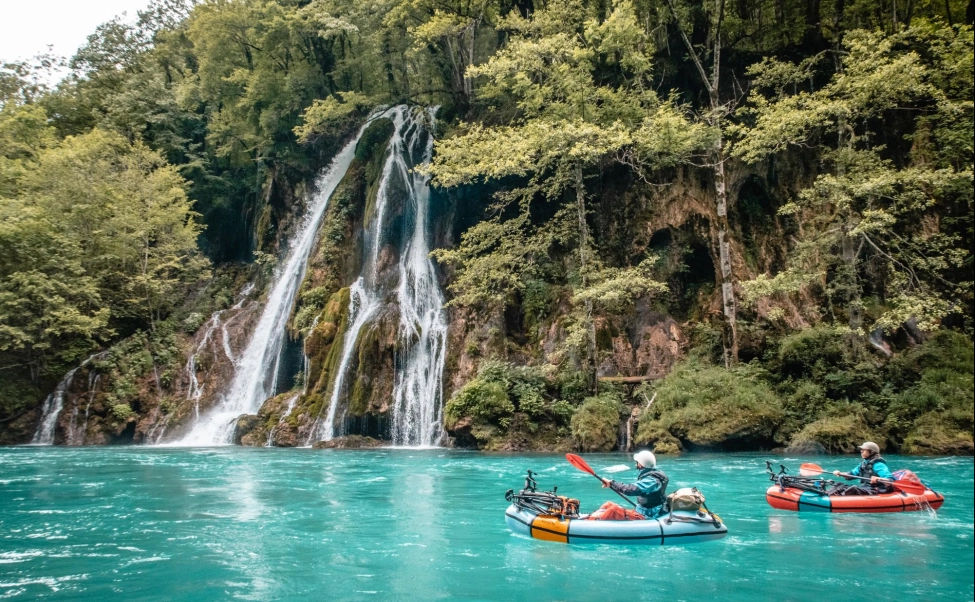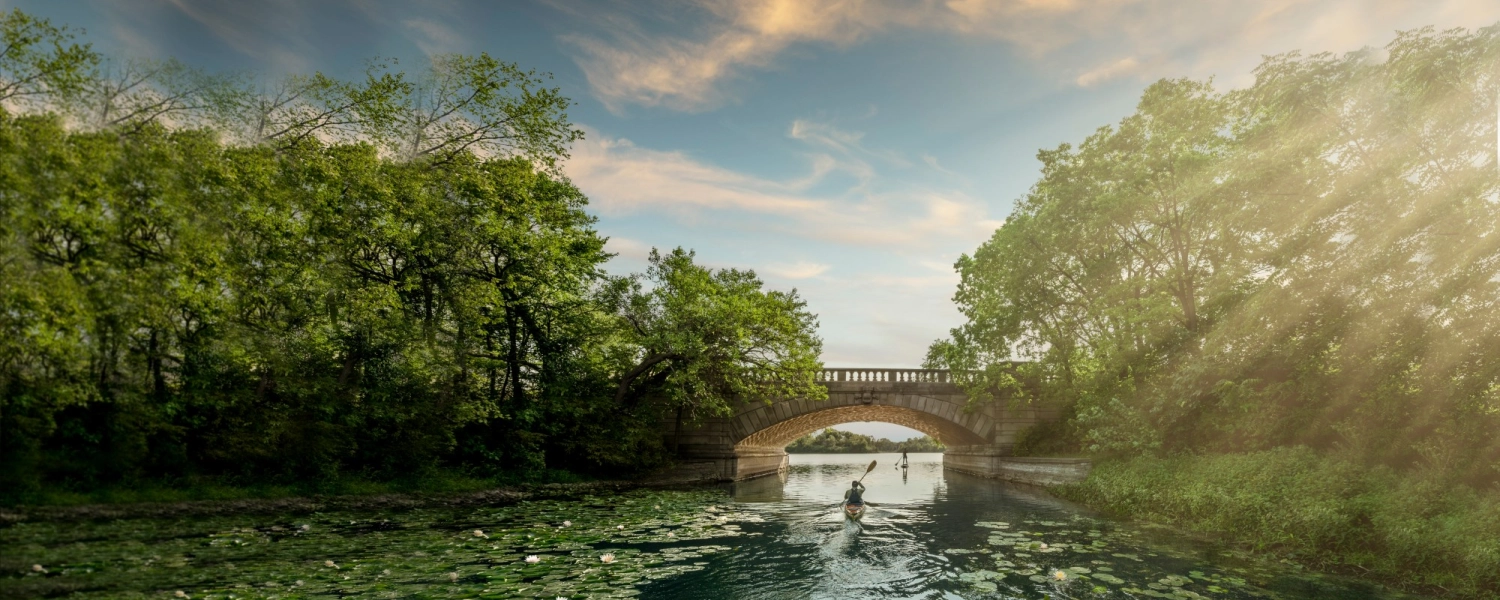- Details
- Written by: Tristan Kennedy
Header image: Overarching Theme
Travelling to Lebanon in 2016 meant having to shop around for riders to accompany me. With the Syrian war raging across the border, many professional athletes were less than keen. But what we found in Lebanon was a welcoming, warm, hospitable country at peace, and a trail littered with beautiful photo spots, such as this huge arch. When I look at such images I’m reminded how privileged I am to be able to step in and out of such places, and I’m deeply troubled by the way so many of them are sucked back into conflict later.
Camera: Nikon D750
Lens: 50mm 1.8
Settings: Shutter 1/800 | Aperture f5.6 | ISO 400
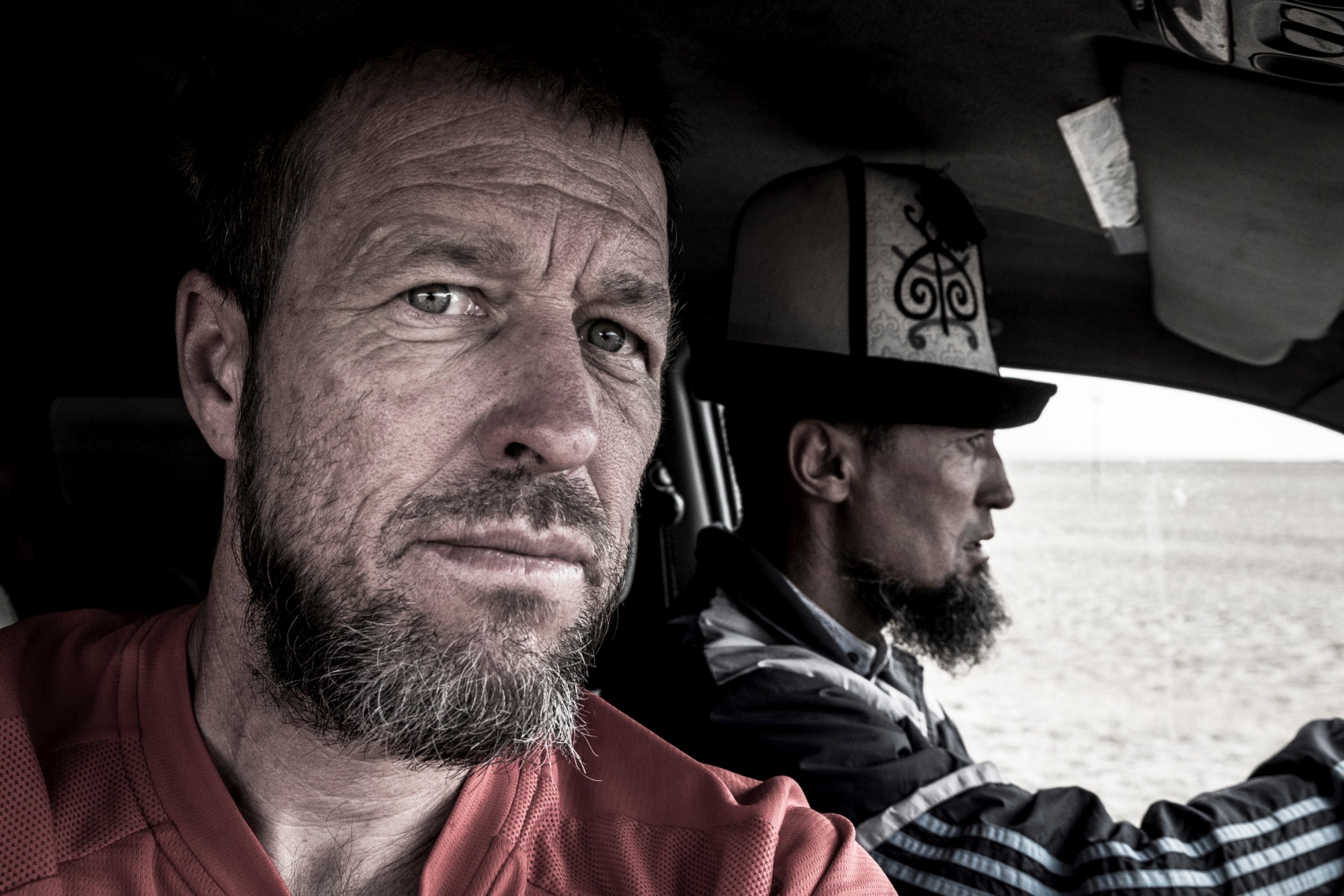
Dan Milner’s 30-year photographic career has taken him about as far from home as it’s possible to go—both geographically, and figuratively. Born in Milton Keynes, England, in 1966, he has since gone on to shoot the farthest flung corners of the Earth, from Svalbard in the Arctic, to the southern tip of Chile, to the “hermit kingdom” of North Korea, where he led a pioneering mountain biking expedition in 2018.
He honed his craft as an adventure snapper in the 90s, shooting on film while holding down a day job for the UK Environment Agency. Eventually, he decided to move to Chamonix to pursue photography full-time. His work has appeared in almost all of major mountain bike and winter sports titles, including Bike and TransWorld Snowboarding as well as mainstream publications like Men’s Health, The Guardian and The Financial Times. He recently moved to the Isle of Skye, where he’s bought a nine-acre croft that he’s replanting with native tree species in between work trips to distant destinations. Known for his sardonic wit—both in person, and in the written stories which often accompany his photojournalism—Milner describes himself as “a sucker for punishment.” But while his chosen expeditions often involve physical hardship, his career has been nothing if not rewarding—as the images on these pages show.
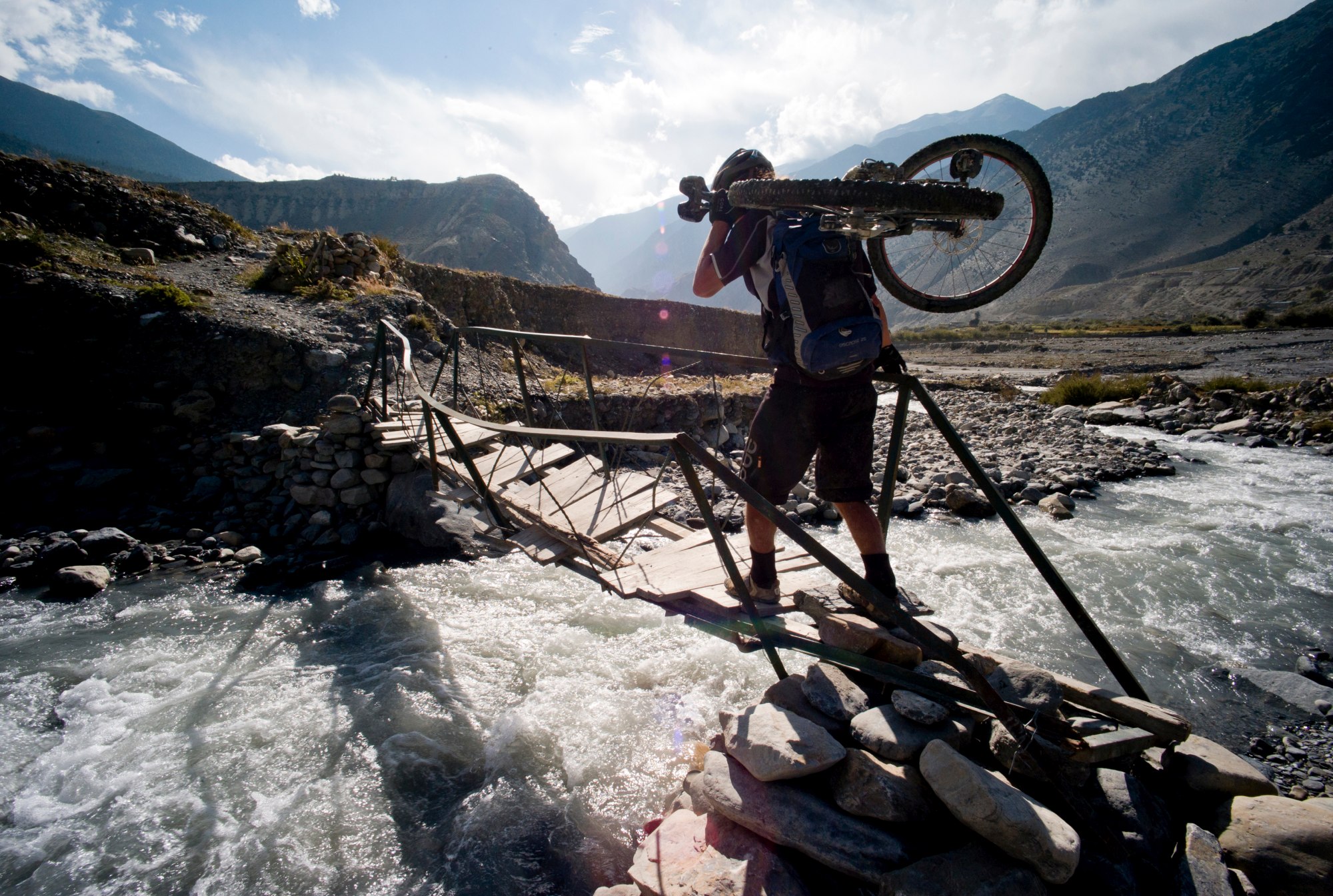
A Troubled Bridge Over Water
When I heard about a road that was going to be ploughed north to Tibet through the Upper Mustang region of Nepal, and the changes it spelled for the area, I pitched a story about mountain biking the trails there before they were lost. This photo, while nothing extraordinary or spectacular, serves to remind me that such adventures aren’t without challenges—even if it comes as a mere bridge crossing. I remember we played “paper, scissors, stone” for who would try the crossing first. Seb (pictured) lost.
Camera: Leica M9
Lens: Zeiss 18mm
Settings: Shutter 1/250 | Aperture f11 | ISO 160
Active Traveller: What first got you into photography?
Dan Milner: I’ve always loved the creative and story-telling sides of photography—less so the technical aspects. I was immersed in politics in the 1980’s and 90’s and so documented most of the street demonstrations I went on, shooting on 35mm film, before ultimately heading off to South America in 1989 on a solo seven-month backpacking trip, to better understand the local, leftwing political movements of the time. That was an eye-opening journey, encompassing being tear-gassed and shooting Inca ruins in equal measure. Looking at them now, I don’t think the images are particularly strong, but it was a valuable part of the process of learning both what the camera is capable of, and what I am capable of. I’d say the risks I took then helped shape my perception of adventure photography.
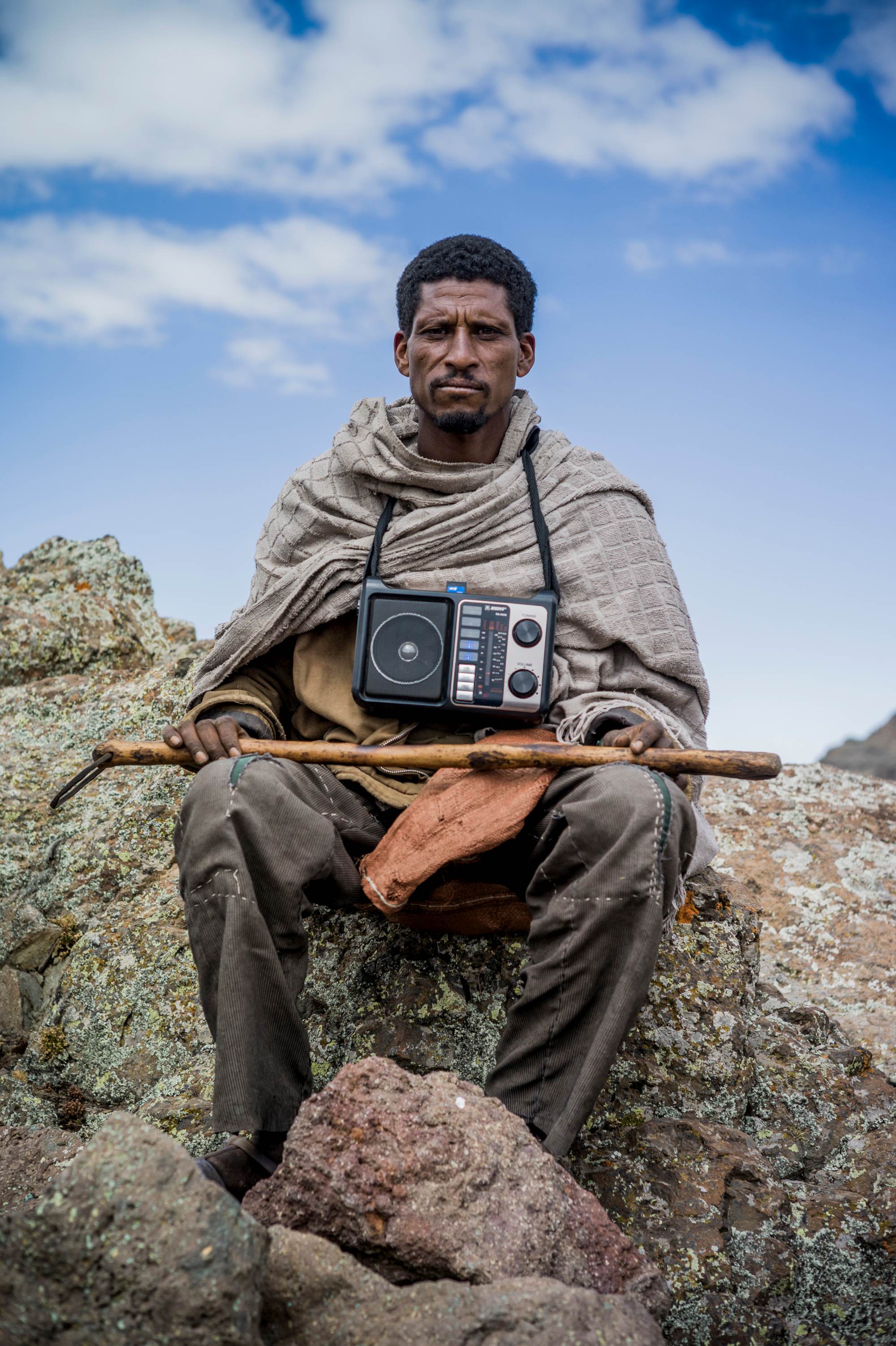
Guerilla Radio
I met Dereje Adera, an Ethiopian Shepherd, in 2015, when we were trying to summit Ras Dashen, the country’s highest peak at 4,500m, on our bikes. I can’t speak any of the 90 or so languages of Ethiopia, and he couldn’t speak English, but I loved the ska-like local music that blasted out from the radio hung around his neck. We bonded over that, and then I felt I could ask Adera for a portrait. I always try to get people’s names when I shoot them. I love the way his high tech SD-card radio undermines stereotypes of Ethiopia as poor or undeveloped.
Camera: Leica M9
Lens: Zeiss 50mm
Settings: Shutter 1/1000 | Aperture f4 | ISO 200
AT: You’re one of the lucky few in life who’s turned something you love into your job. Does photography still feel like something you’d do for fun? Or does it always feel like work these days?
DM: The work-fun balance is a rollercoaster. For years I resisted hauling a camera while mountain biking as that was my escape from work, but slowly the sport became my income. Escaping from work and letting your mind idle is still really important, but I think today’s iPhone-wielders feel the need to document every experience photographically instead of actually living the moment. Even on big adventure trips there are always moments that I put the camera down, choosing instead to just absorb the experience and let it sink in. Without that authentic lived experience, we’re just spectators. Today I rarely carry a camera unless I’m either on a brand shoot or on an editorial story trip. Or I’m engaging in one of my longer term photo documentary projects.
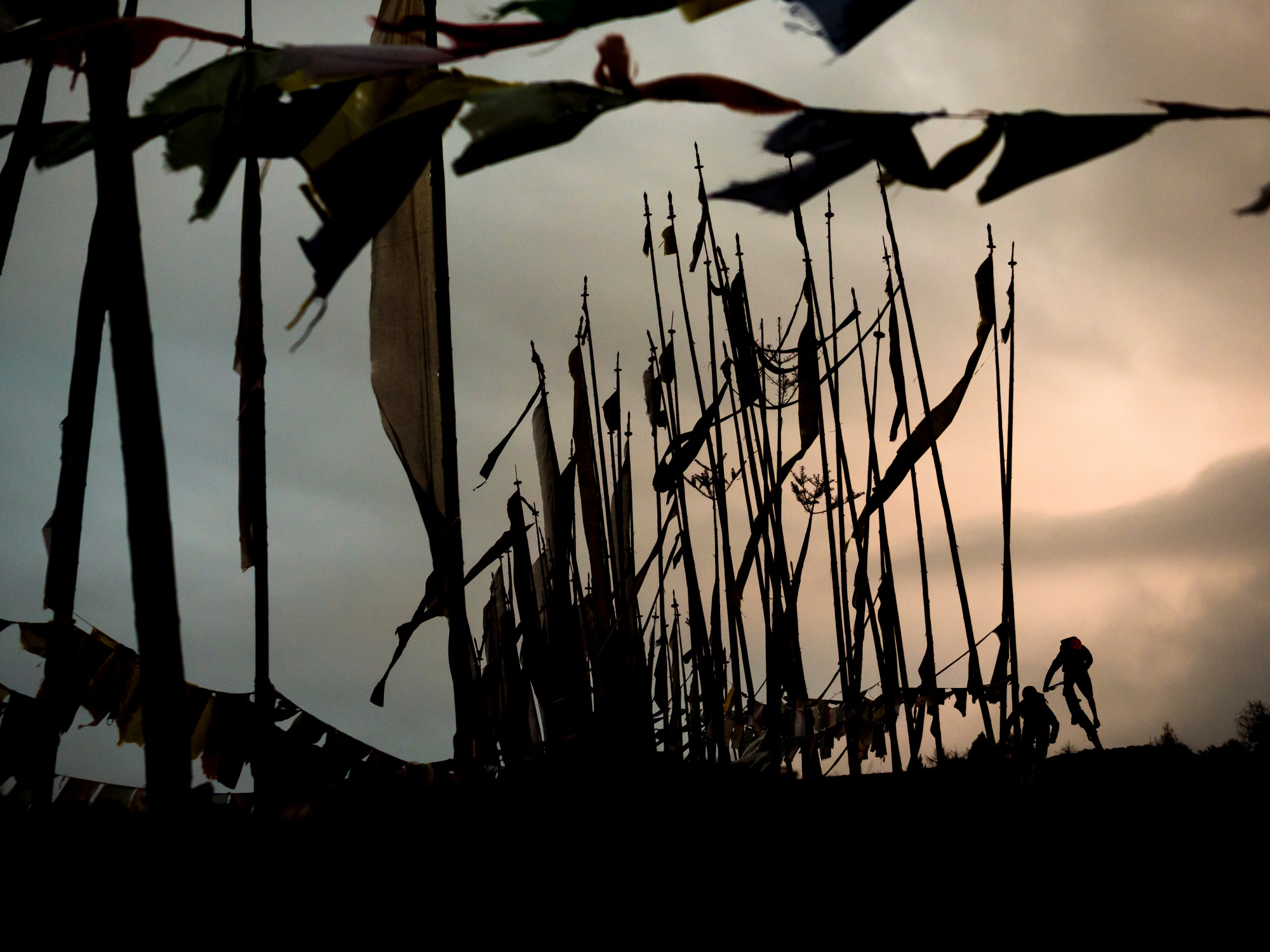
Prayer Flags at Dawn
To me travel photography is about appreciating attributes of different cultures and finding ways to incorporate them into fresh perspectives. Camping out at 3,000 metres altitude near these prayer flags in Bhutan in 2019 meant being able to photograph them at sunset and sunrise. Even though the light didn’t ‘pop’ as hoped it worked out fine—I’ve always been a firm believer in the power of a simple silhouette.
Camera: Lumix G9
Lens: Lumix 35-100
Settings: Shutter 1/500 | Aperture f3.5 | ISO 640
AT: What is it that keeps you interested in travel and adventure photography, as subjects?
DM: I see travel photography as a way of sharing other people’s stories. I hope that by helping shine a light on a lesser known region or culture I can help viewers empathise with people’s plights, and steer them away from xenophobia. The adventure element hopefully encourages people to step outside their comfort zone, or whatever limits they have. Adventure and travel are as much about self-discovery as they are discovering places.
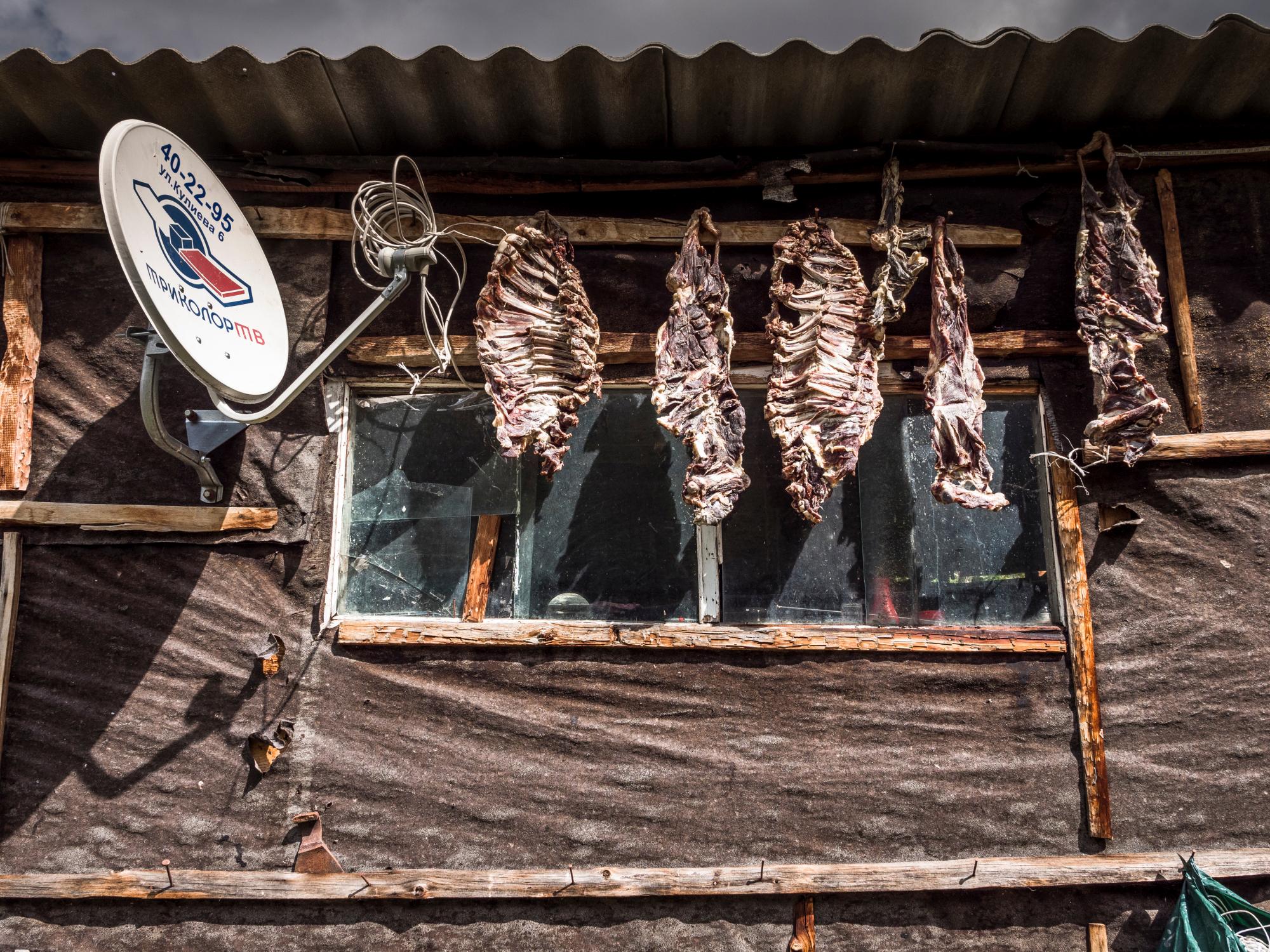
Raw & Uncompromising
It’s the detail that often really reveals a people’s culture and I look for those scenes everywhere I go. This unusual contrast played out on the flank of Russia’s Mount Elbrus, around which we were mountain biking on a self-guided 6-day trip in 2018. I was drawn to how raw everything in this scene is, and the way it captured the gritty, uncompromising reality of life here, on the side of Europe’s highest peak.
Camera: Lumix G9
Lens: Lumix 12-35
Settings: Shutter 1/800 | Aperture f6.3 | ISO 200
AT: What’s the single biggest change in adventure photography in the years you’ve been shooting?
DM: Adventure photography is no longer the preserve of elitist professional explorers, and that’s such a valuable progression. At the same time, maybe due to the fast pace of today’s world or the desire for internet clicks, I now see more places becoming photography-weary and even hostile—especially in popular tourist destinations like Morocco, where subjects are tired of having lenses pointed at them. The appeal of adventure has never been greater, especially since Covid, and documenting it has never been more accessible. But I think we need to remind ourselves to be empathic. Engage first, photograph later: after all how can you really tell a person’s story or capture their personality without speaking to them?

Back to the Roots
The most southern waymarked trail in the world lies on the Chilean island of Navarino, on the southern side of the Beagle Channel. Wild, remote and previously unridden are usually all the keywords I need to go try a new location, but when doing so, you have to take the rough with the smooth. Even in mid-summer (January), the weather here is “challenging”. The trail itself is even more so—especially when carrying bikes and camping gear and supplies for three nights out under canvas. Although it lacks the big landscapes I usually shoot, this image, taken in 2018, conveys the tougher aspects of this endeavour, with the trees twisted and tormented by the sub-Antarctic climate.
Camera: Lumix G9
Lens: Lumix 12-35
Settings: Shutter 1/100 | Aperture f6.3 | ISO 800
AT: Who or what are your biggest photographic influences?
DM: If I had the nerve, I’d be a street photographer, so Martin Parr is up there on my hero list. Like Parr, I’ve always been amazed by the contradictions that frame our societies. Perhaps it’s what makes us human, and my personal projects focus more on this. Even when travelling I like to spot and capture connections with humanity, and that’s often hidden in the details—the delicate lace cover on the DVD player that’s streaming North Korean propaganda onto a TV in a waiting lounge; the kitsch cat decorated tea tray used to serve drinks 4,000 metres up in Nepal. Otherwise I draw inspiration from big landscape photographs, like Ansel Adams’ work. The humbling drama of the landscape plays a big part of my adventure photography, setting sporting exploits against this enormous backdrop.

Riding Into the Unknown
You could pore over the internet for months without success to try to research the best places to mountain bike in North Korea, but for our trip in 2018 we knew our itinerary had to include 2,744m-high Mount Paektu. This vast, dormant volcano is the Koreans’ spiritual home, a place of pilgrimmage, and supposedly the site where both Kim Il Sung and Kim Jong Il were born. We had only two days at this location, and our first was lost to thick fog and rain. When the clouds cleared on the second day we launched at the mountain at sunrise, battling a windchill of about -5°C to nail as many shots as we could.
Camera: Lumix G9
Lens: Leica 8-18mm
Settings: Shutter 1/1250 | Aperture f5.6 | ISO 400
AT: If there’s one photo you wish you had taken—by anyone, of anything, from any era—which one would it be?
DM: That’s a hard one. It’d probably be a Don McCullen image from the troubles in Northern Ireland, or one of Michael ‘Nic’ Nicol’s B&W wildlife images. Really though, I think it’s more important to draw inspiration from such work and decipher how that can influence your own. It’s easy to overlook what goes into getting an image, and the fact that if you were in those photographers’ shoes at that moment, your picture would likely look very, very different.
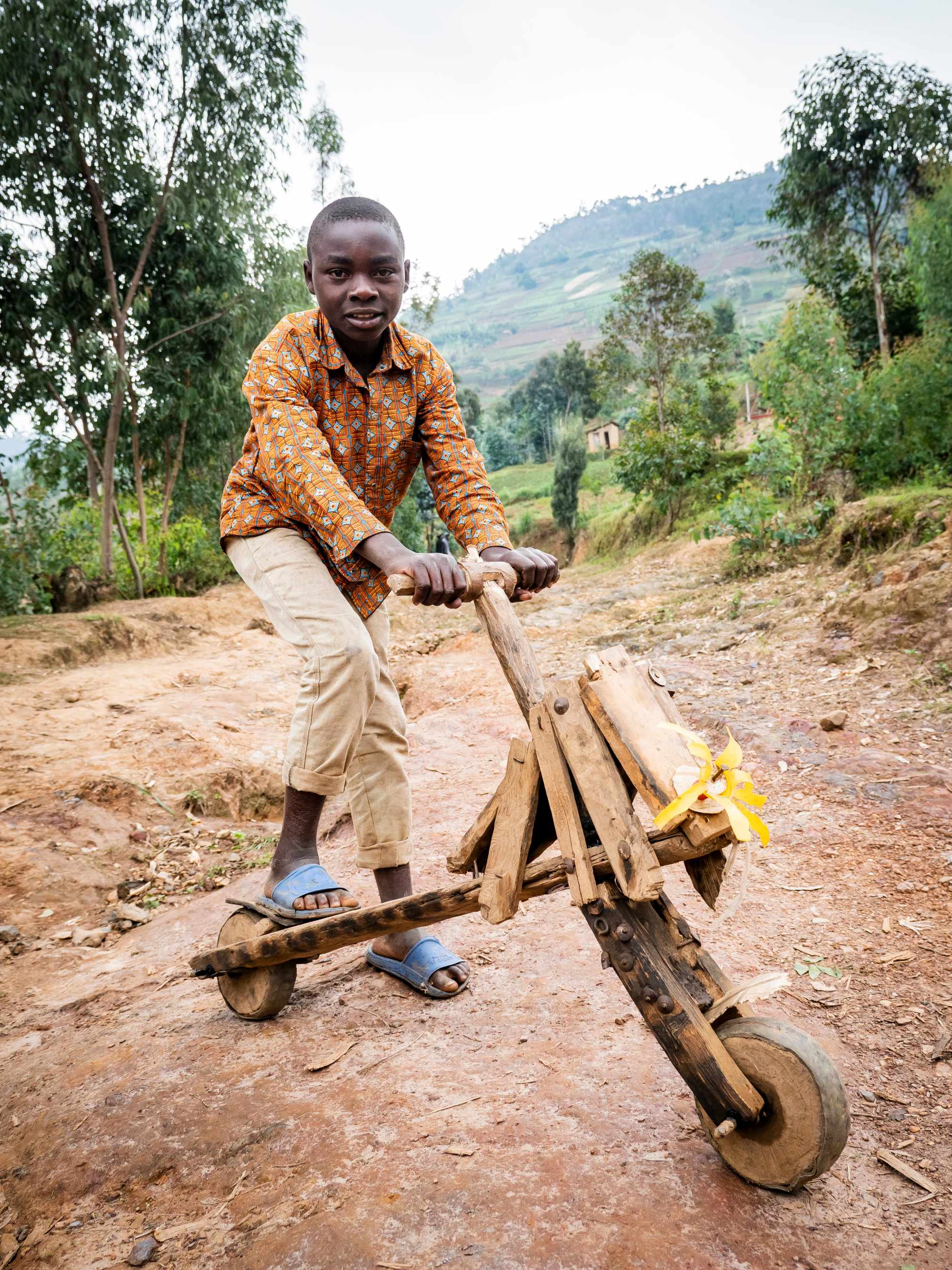
Pimp My Ride
Encounters with kids usually provide an injection of energy on any adventure and so it was in Rwanda in 2021. Riding between villages in the north west of the country meant coming across kids aboard their home made ‘wooden bikes’. What I loved about this shot of Tuyiringere Philipe are his ornately patterned shirt, and the bright yellow plastic flower that sits decoratively on the front of the ‘bike’. Pride, image-consciousness, and the desire to express your own sense of style are important wherever you are.
Camera: Lumix G9
Lens: Lumix 12-35
Settings: Shutter 1/250 | Aperture f3.5 | ISO 400
AT: They say the camera never lies. Do you think that’s true?
DM: As we enter a world of AI-generated images I’d say photos have never been more able to lie. But that’s always been the case to some extent, even for reportage photographers. How you tell a story from the image is down to how you frame the subject matter when you shoot. What you include, what you exclude, what lens you choose to change perspective or add drama, and then how you process that image, giving it a certain look or feel. There’s a lot of power in the decisions a photographer makes!
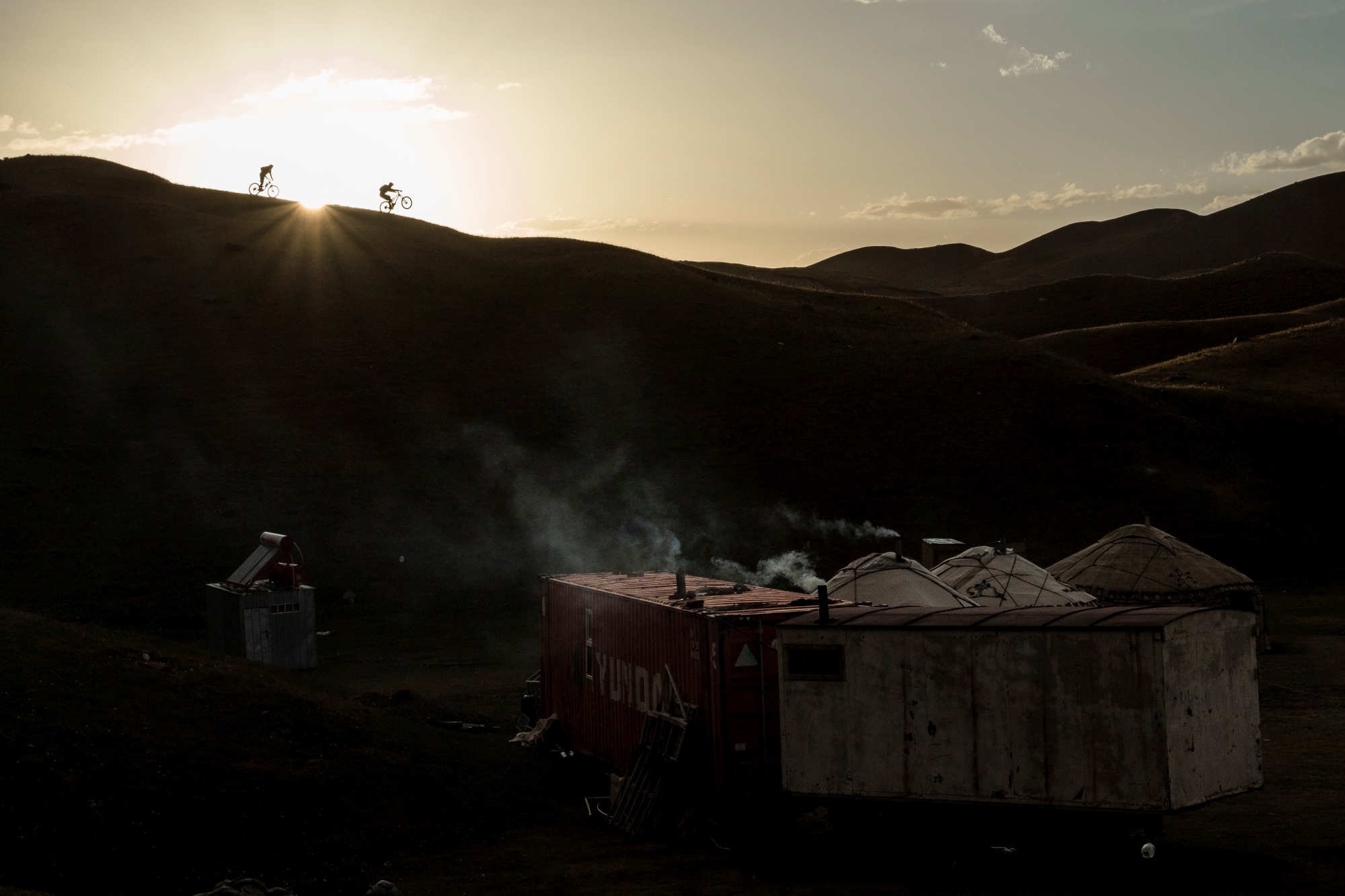
A Ridge too Far?
Kyrgyzstan is a place where horses are valued higher than cars and the countryside is littered with remnants of the Soviet empire. Our mountain bike traverse of the Alai mountains finished at Lenin Peak base camp where converted shipping containers and yurts have become homes for semi-nomadic herders. Staying in these yurts allowed us the flexibility to work with the light to capture this shot. My two riders shelved their fatigue from the past days of high-altitude riding to work their magic one more time for my camera.
Camera: Leica G9
Lens: 35-100
Settings: Shutter 1/100 | Aperture f9 | ISO 320
AT: What are you working on at the moment / how can people keep up with your work?
DM: Aside from planting a lot of trees on our biodiversity project in Scotland, I juggle brand shoots and trips with my own personal projects—one of which seems to involve me camping out next to nuclear power stations a lot. I have a big gallery on my website, and while I am notably rubbish at the whole social media thing, I do occasionally post some updates on my projects, or share glimpses of past expeditions on @danmilnerphoto and @pixelatedpostcards

